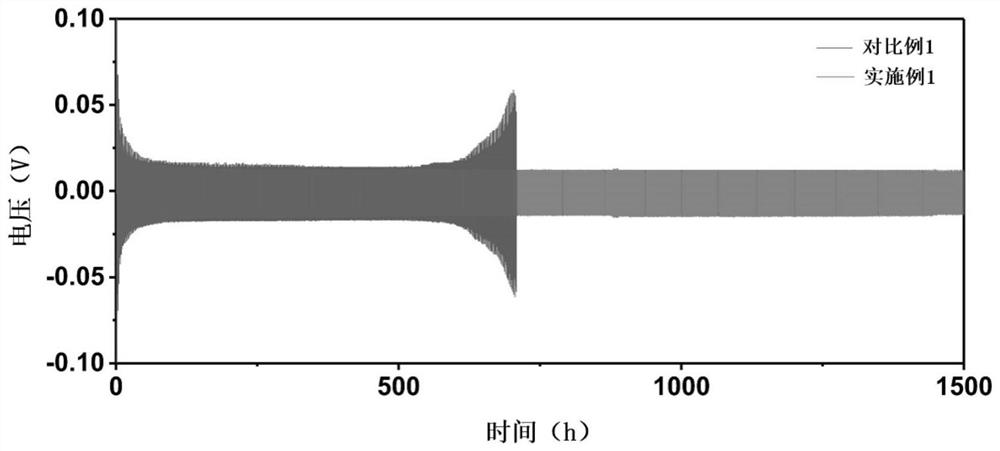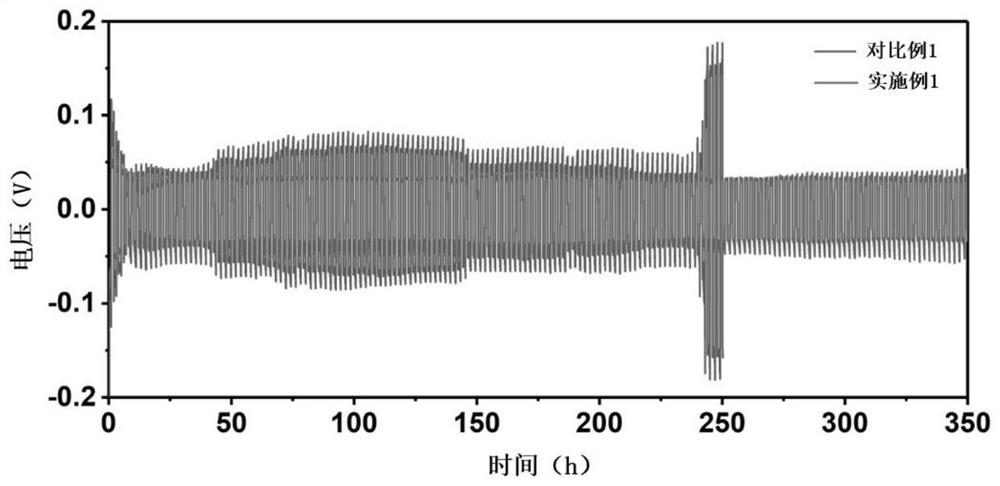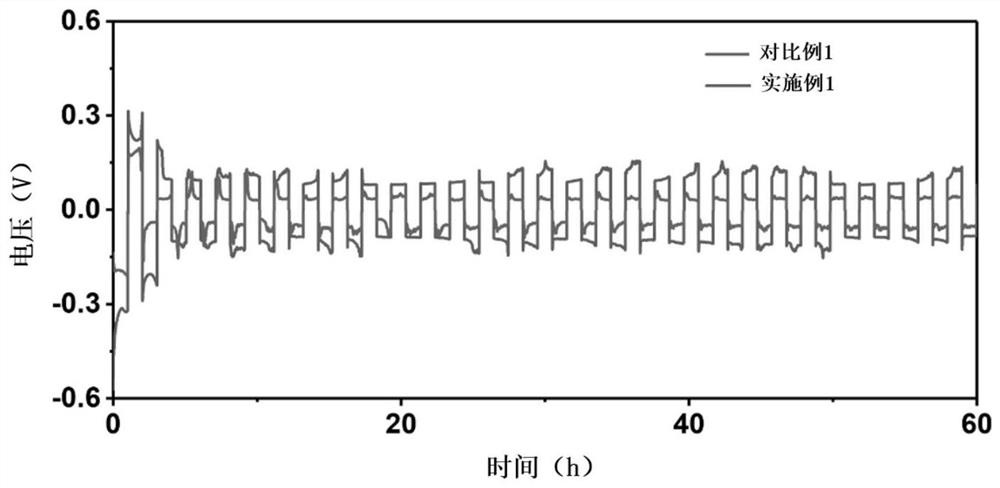A kind of two-dimensional nanostructure electrolyte additive, preparation method and application
A two-dimensional nanostructure, electrolyte additive technology, applied in the fields of electrolyte battery manufacturing, nanotechnology, secondary batteries, etc., can solve problems such as the decrease of additive concentration and the inability to meet long-term stability, and achieve better thickness control and improvement. Conductivity and ion mobility number, the effect of uniform interaction
- Summary
- Abstract
- Description
- Claims
- Application Information
AI Technical Summary
Problems solved by technology
Method used
Image
Examples
preparation example Construction
[0027]The preparation method of the two-dimensional nanostructure electrolyte additive includes the following steps:
[0028](1) The organic or inactive block material is peeled off into a two-dimensional nanof piece having a thickness of less than 10 nanometers using ball milling, ultrasonic dispersion or chemistry. Wherein, the ball mill is 10 h to 20 h; the ultrasonic dispersed time is 1 h to 10h; the dispersant used for ultrasonic dispersion is water, ethanol, isopropanol, N, N-dimethylformamide, N- One or more of methylpyrrolidone.
[0029](2) The two-dimensional nano sheet was added to the deionized water and dispersed uniform, obtained a two-dimensional nano-sperm dispersion, and then dissipated the two-dimensional nanoconographic dispersion to obtain a two-dimensional nano-structural electrolyte additive. Among them, a two-dimensional nano-melen dispersion solution is also required to perform vacuum filtration before the two-dimensional nanocarbon dispersion is freeze.
[0030]The pr...
Embodiment 1
[0033]Preparation of additives
[0034]The preparation method of the additive of the present embodiment includes the steps of:
[0035](1) 2 g of hexagonal boron and 120 g of urea were added to a 150 ml of polytetrafluoroethylene ball, and after sealed at room temperature at a 500rpm tension ball milling 24h.
[0036](2) The mixture obtained by step (1) was added to 1 L of deionized water, and the ultrasound was dispersed for 1 h.
[0037](3) The dispersion obtained by step (2) was vacuum filtered and washed twice with deionized water, and the dried dried.
[0038]The additive of the present embodiment is a white powder, and a colloid can be formed in the electrolyte, adding from 0.7% by mass.
[0039]2. Preparation of electrolyte
[0040]By mixing DOL, DME is mixed in volume ratio 1: 1, then add LITFSI and LINO3, Equipped with 1M LITFSI and 2WT% LINO3The electrolyte was dissolved, and the above additive was dissolved, and the mass ratio of 99.3: 0.7 was mixed, and the desired electrolyte was obtained a...
Embodiment 2
[0043]The preparation method of the additive is basically the same as that of Example 1, but is used instead of urea ball milling using sucrose. Further, the additive and the electrolyte were mixed in accordance with 99: 1 mass ratio, and the electrolyte salt was used in 1 m Litfsi and an organic solvent using Dol + DME (1: 1, Vol). Also test lithium metal symmetry batteries, the amount of electrolyte is not used. Test its room temperature cycle performance.
PUM
| Property | Measurement | Unit |
|---|---|---|
| thickness | aaaaa | aaaaa |
Abstract
Description
Claims
Application Information
 Login to View More
Login to View More - R&D
- Intellectual Property
- Life Sciences
- Materials
- Tech Scout
- Unparalleled Data Quality
- Higher Quality Content
- 60% Fewer Hallucinations
Browse by: Latest US Patents, China's latest patents, Technical Efficacy Thesaurus, Application Domain, Technology Topic, Popular Technical Reports.
© 2025 PatSnap. All rights reserved.Legal|Privacy policy|Modern Slavery Act Transparency Statement|Sitemap|About US| Contact US: help@patsnap.com



